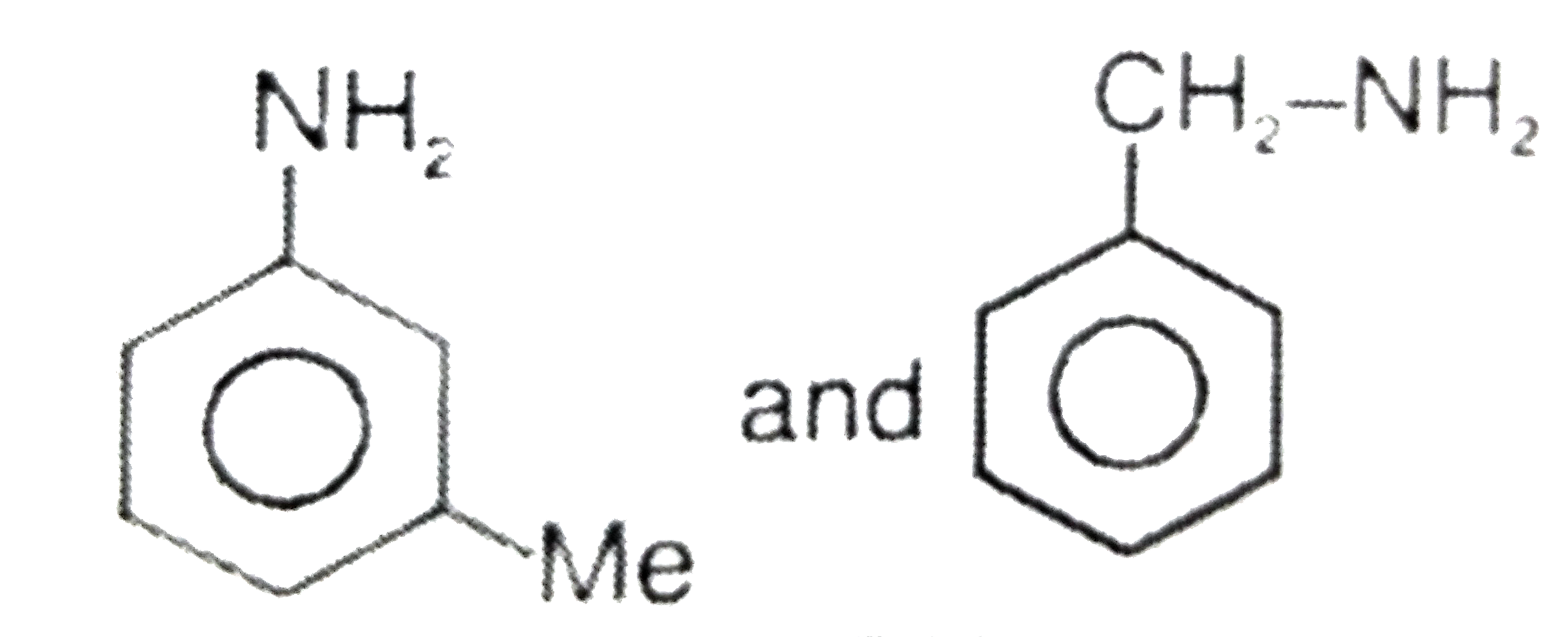Glucose and sucrose can be distinguished by ..........or ..............solution.
To distinguish between glucose and sucrose, we can use the following steps:
1. Understanding Reducing and Non-Reducing Sugars:
- Glucose is a reducing sugar because it has a hemiacetal group that can donate electrons.
- Sucrose, on the other hand, is a non-reducing sugar because it does not have a hemiacetal group.
2. Identifying Tests for Reducing Sugars:
- The Tollen's test and the Fehling's test (also known as the Fehling's solution) are common tests used to identify reducing sugars.
- Both tests can be used to distinguish glucose from sucrose.
3. Performing the Tests:
- Tollen's Test: When glucose is treated with Tollen's reagent (silver nitrate in ammonia), it will reduce the reagent, resulting in a silver mirror on the test tube. Sucrose will not produce this reaction.
- Fehling's Test: When glucose is mixed with Fehling's solution and heated, it will produce a brick-red precipitate of copper(I) oxide. Sucrose will not react in this test.
4. Conclusion:
- Therefore, glucose can be distinguished from sucrose by using either Tollen's test or Fehling's solution.
Final Answer:
Glucose and sucrose can be distinguished by Tollen's test or Fehling's solution.
- Glucose is a reducing sugar because it has a hemiacetal group that can donate electrons.
- Sucrose, on the other hand, is a non-reducing sugar because it does not have a hemiacetal group.
- The Tollen's test and the Fehling's test (also known as the Fehling's solution) are common tests used to identify reducing sugars.
- Both tests can be used to distinguish glucose from sucrose.
- Tollen's Test: When glucose is treated with Tollen's reagent (silver nitrate in ammonia), it will reduce the reagent, resulting in a silver mirror on the test tube. Sucrose will not produce this reaction.
- Fehling's Test: When glucose is mixed with Fehling's solution and heated, it will produce a brick-red precipitate of copper(I) oxide. Sucrose will not react in this test.
- Therefore, glucose can be distinguished from sucrose by using either Tollen's test or Fehling's solution.
Glucose and sucrose can be distinguished by Tollen's test or Fehling's solution.
Topper's Solved these Questions
- BIOMOLECULES BOOK - PRADEEPCHAPTER - BIOMOLECULES EXERCISE - Conceptual Questions
14 Videos
- BIOMOLECULES BOOK - PRADEEPCHAPTER - BIOMOLECULES EXERCISE - NCERT (QUESTIONS AND EXERCISES) WITH ANSWERS (NCERT INTEXT UNSOLVED QUESTIONS)
8 Videos
- BIOMOLECULES BOOK - PRADEEPCHAPTER - BIOMOLECULES EXERCISE - TEST YOUR GRIP (Multiple Choice Questions)
23 Videos
- APPENDIXBOOK - PRADEEPCHAPTER - APPENDIXEXERCISE - MODEL TEST PAPER <br> (Section C )
15 Videos
- CHEMICAL KINETICSBOOK - PRADEEPCHAPTER - CHEMICAL KINETICSEXERCISE - ADVANCED PROBLEMS FOR COMPETITIONS
14 Videos
Similar Questions
Which of the following pairs can be distinguished by Fehling's solution ?
(A) Glucose and fructose
(B) Glucose and sucrose
(C) Methanal and ethanol
(D) Hydroxypropanone and benzaldehyde
View SolutionDefine the terms solute, solvent and solution. Can solute particles be distinguished from solvent in a solution?
View Solution
Knowledge Check
 can be distinguish by ACHCl3+KOHBNaNO2+HCl followed by β-NaptholCCS2+HgCl2DNa metal
can be distinguish by ACHCl3+KOHBNaNO2+HCl followed by β-NaptholCCS2+HgCl2DNa metalSTATEMENT-1 : Glucose and fructose can be differentiated by Fehling's solution.
and
STATEMENT-2 Glucose is an aldose while fructose is a ketose (having keto functional group).AStatement-1 is True, Statement-2 is True, Statement-2 is a correct explanation for Statement-2BStatement-1 is True, Statement-2 is True, Statement-2 is NOT a corrèct explanation for Statement-2CStatement-1 is True, Statement-2 is FalseDStatement-1 is False, Statement-2 is TrueWhich of the following pairs can be distinguished by Fehling's solution?
AGlucose, fructoseBRibose ,glucoseCGlucose,sucroseDFructose , sucrose
Calculate the osmotic pressure at 25∘C of a solution containing 1g of glucose and 1g of sucrose in 1 litre of solution.
If it were not known that the solute was a mixture of glucose and sucrose, what would be the molecular weight of solute corresponding to the calculated osmotic pressure ?
View SolutionWhich of the following pairs of compounds can be distinguished by using Fehling's Fehling's solution?
View SolutionAn aldohexose (e.g., glucose) and 2 - oxohexose (e.g., fructose) can be distinguished with the help of
View SolutionWhich of the following pairs of compounds can be distinguished by using Fehling's Fehling's solution?
View SolutionThe reagnet which may be used to distinguish cane sugar and glucose solutions is
View Solution
